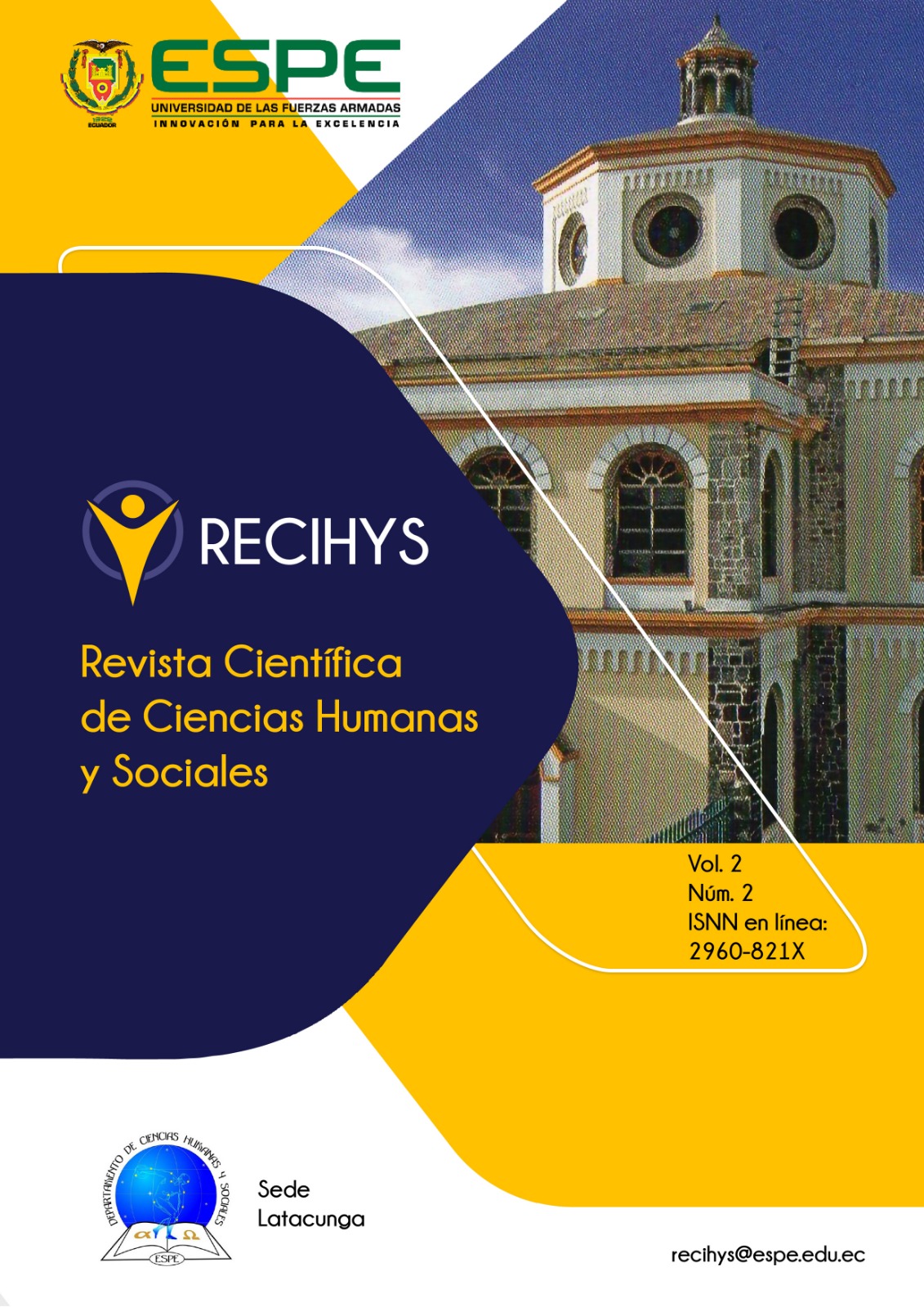Incidence of the application of active breaks, as a means to reduce Burnout Syndrome in the staff of the Tecnológico Universitario Pichincha
Main Article Content
Abstract
The purpose of this research is to determine the incidence of activity breaks within the work day, allowing the risk of acquiring burnout syndrome to be reduced among the staff of the University Pichincha. The research was developed from a quantitative approach using the survey technique as a primary data collection method. The results showed that a considerable percentage of those surveyed were within the range of said syndrome. In the pretest, 42% presented exhaustion or emotional exhaustion and in the posttest this figure was reduced to 30%. Regarding depersonalization, 33% experienced it in the pretest, decreasing to 23% in the posttest. In the personal performance, the pretest showed 25%, while in the posttest an improvement was observed, reaching 47%. These results demonstrate a contribution to the improvement of work performance after the application of the recreational program.It was identified that there is a very high interest in physical activities. It was discussed that active breaks can be a valuable tool to promote an active and healthy lifestyle among the workers of the Tecnológico Universitario Pichincha, thus favoring their integral development and preparing them to cope with stress that is not affected in the worker, allowing them to achieve better work and personal control. In conclusion, the study highlights the importance of implementing active breaks to reduce the risk of acquiring burnout syndrome, which will have a positive impact on your physical, mental, emotional and social health.
Downloads
Article Details

This work is licensed under a Creative Commons Attribution 4.0 International License.
Authors who publish in this journal agree to the following terms: Authors retain the copyright and guarantee the journal the right to be the first publication of the work, as well as, licensed under a Creative Commons Attribution License that allows others share the work with an acknowledgment of the authorship of the work and the initial publication in this journal. Authors may separately establish additional agreements for the non-exclusive distribution of the version of the work published in the journal (for example, placing it in an institutional repository or publishing it in a book), with acknowledgment of its initial publication in this journal. Authors are allowed and encouraged to disseminate their work electronically (for example, in institutional repositories or on their own website) before and during the submission process, as it may lead to productive exchanges as well as further citation earliest and oldest of published works.
How to Cite
References
Stavroula, L. (2022). La organización del trabajo y el estrés. https://iris.who.int/bitstream/handle/10665/42756/9243590472.pdf?sequence=1 PDF
Angulo, L. D. J. B., Lainez, M. V. M. R., Nivela, L. C. de L. D., Chiriguayo, L. J. T. A., Zuñiga, L. G. A. P., & León, L. T. A. A. de. (2020, julio). La relajación y estrés laboral en el personal docente: Una revisión sistemática [Text]. Efdeportes. https://doi.org/10.46642/efd.v25i266.1617
Armas, M. (2018). Programa de ejercicios fisioterapéuticos para la disminución del estrés laboral en el personal administrativo de la Universidad Deportiva del Sur, Cojedes, Venezuela. https://www.efdeportes.com/efd196/ejercicios-para-la-disminucion-del-estres-laboral.htm
Benavides, L. (2016). Influencia de un programa de pausas activas sobre el riesgo psicosocial en los miembros de la Escuela Aurora de Chile. https://www.efdeportes.com/efd216/influencia-de-un-programa-de-pausas-activas.htm
Bergamaschi, E. C., Deutsch, S., & Ferreira, E. P. (2002). GINÁSTICA LABORAL: POSSÍVEIS IMPLICAÇÕES PARA AS ESFERAS FÍSICA, PSICOLÓGICA E SOCIAL. Revista Brasileira de Atividade Física & Saúde, 7(3), Article 3. https://doi.org/10.12820/rbafs.v.7n3p23-29
Cáceres-Muñoz, V. S., Magallanes-Meneses, A., Torres-Coronel, D., Copara-Moreno, P., Escobar-Galindo, M., & Mayta-Tristán, P. (2017). Efecto de un programa de pausa activa más folletos informativos en la disminución de molestias musculoesqueléticas en trabajadores administrativos. Revista Peruana de Medicina Experimental y Salud Publica, 34(4), 611-618. https://doi.org/10.17843/rpmesp.2017.344.2848
Díaz, U. (2015). Factores asociados a la presencia de burnout en educadores físicos veracruzanos. http://www.efdeportes.com/efd211/presencia-de-burnout-en-educadores-fisicos.htm
European Agency for Safety & Health at Work—Information, statistics, legislation and risk assessment tools. (2002). https://osha.europa.eu/es
González Ruiz, G., Carrasquilla Baza, D., Latorre de la Rosa, G., Torres Rodríguez, V., & Villamil Vivic, K. (2015). Síndrome de Burnout en docentes universitarios. Revista Cubana de Enfermería, 31(4), 0-0.
Hernangómez Barahona, J., Martín Pérez, V., & Martín Cruz, N. (2009). Implicaciones de la organización interna sobre la eficiencia. La aplicación de la teoría de la agencia y la metodología DEA a las ONGD españolas. Cuadernos de Economía y Dirección de la Empresa, 12(40), 17-46. https://doi.org/10.1016/S1138-5758(09)70041-6
Jarrín-García, G. H., Patiño-Campoverde, M. M., Moya-Lara, I. N., Barandica-Macías, Á. E., & Bravo-Zurita, V. E. (2022). Prevalence of Burnout Syndrome in Ecuadorian higher education teachers in times of the Covid-19 pandemic. 7(2).
López, N. R. (2022). LAS CONDICIONES LABORALES DE LOS TRABAJADORES ACADÉMICOS: LA REGULACIÓN LABORAL Y LA REGULACIÓN ACADÉMICA.
Manzano Díaz, A. (2020). Síndrome de burnout en docentes de una Unidad Educativa, Ecuador. Horizontes. Revista de Investigación en Ciencias de la Educación, 4(16), 499-511. https://doi.org/10.33996/revistahorizontes.v4i16.132
Muñoz, D. (2009). El calentamiento en Educación Física. Fundamentos, tipos y funciones. Sesión práctica. https://www.efdeportes.com/efd129/el-calentamiento-en-educacion-fisica.htm
Sánchez-Oliva, D., Sánchez-Miguel, P. A., Pulido González, J. J., López Chamorro, J. M., & Cuevas Campos, R. (2014). Motivación y burnout en profesores de educación física: Incidencia de la frustración de las necesidades psicológicas básicas. Cuadernos de Psicología del Deporte, 14(3), 75-82.
Santamaría-Puente, A. R., Taco-Paucar, K. E., Zambrano-Párraga, C., & Dávila-Tamayo, P. (2024). Actividades físicas recreativas, alternativa para el uso del tiempo libre en estudiantes de Educación Superior. 2(1).

